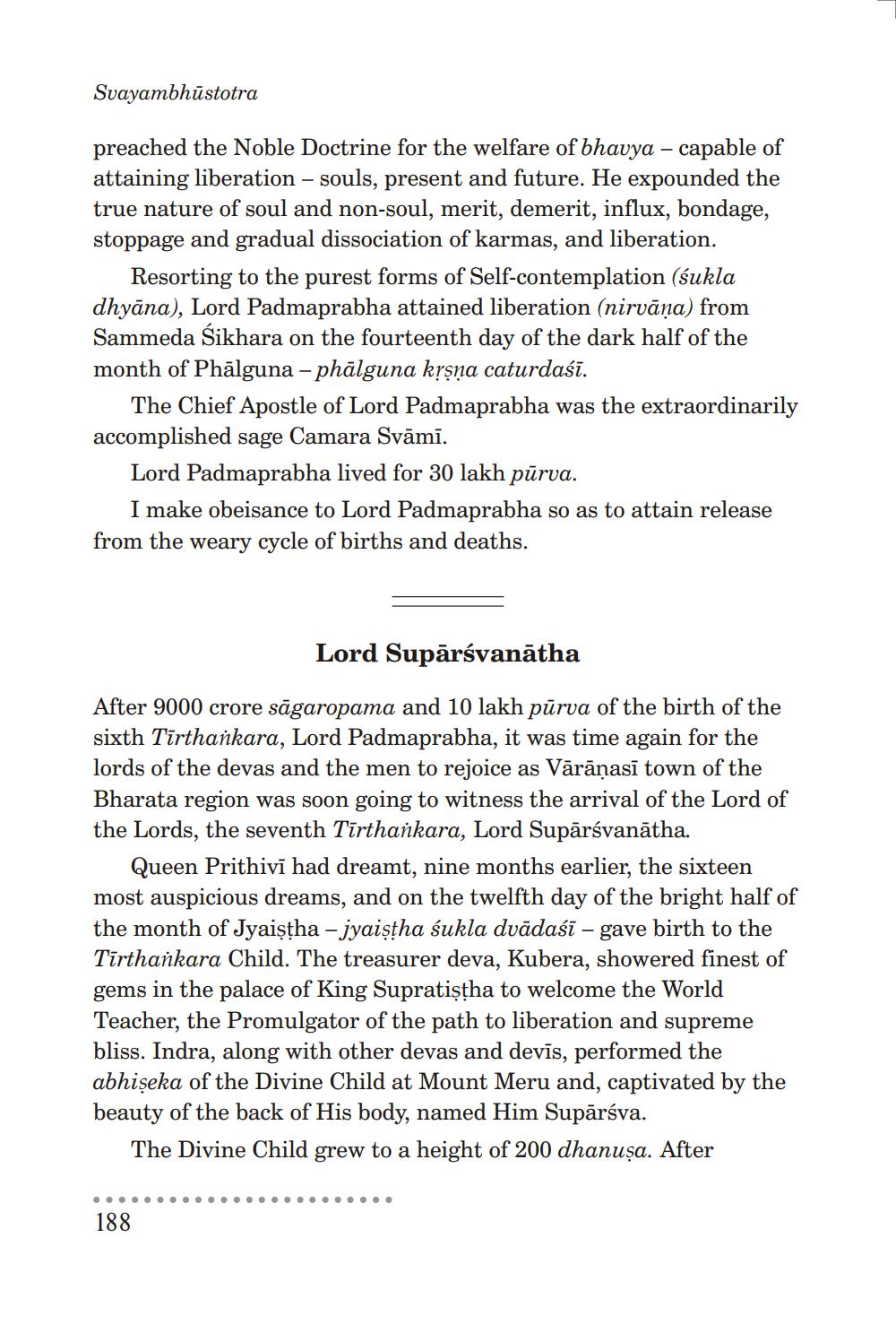________________
Svayambhūstotra
preached the Noble Doctrine for the welfare of bhavya - capable of attaining liberation - souls, present and future. He expounded the true nature of soul and non-soul, merit, demerit, influx, bondage, stoppage and gradual dissociation of karmas, and liberation.
Resorting to the purest forms of Self-contemplation (sukla dhyāna), Lord Padmaprabha attained liberation (nirvāņa) from Sammeda Sikhara on the fourteenth day of the dark half of the month of Phālguna - phālguna kṛṣṇa caturdaśī.
The Chief Apostle of Lord Padmaprabha was the extraordinarily accomplished sage Camara Svāmī.
Lord Padmaprabha lived for 30 lakh pūrva.
I make obeisance to Lord Padmaprabha so as to attain release from the weary cycle of births and deaths.
Lord Supārsvanātha
After 9000 crore sāgaropama and 10 lakh pūrva of the birth of the sixth Tīrthankara, Lord Padmaprabha, it was time again for the lords of the devas and the men to rejoice as Vārāṇasī town of the Bharata region was soon going to witness the arrival of the Lord of the Lords, the seventh Tīrthankara, Lord Supārsvanātha.
Queen Prithivī had dreamt, nine months earlier, the sixteen most auspicious dreams, and on the twelfth day of the bright half of the month of Jyaiştha - jyaisha śukla dvādaśī – gave birth to the Tirthařkara Child. The treasurer deva, Kubera, showered finest of gems in the palace of King Supratiştha to welcome the World Teacher, the Promulgator of the path to liberation and supreme bliss. Indra, along with other devas and devīs, performed the abhiseka of the Divine Child at Mount Meru and, captivated by the beauty of the back of His body, named Him Supārsva.
The Divine Child grew to a height of 200 dhanuşa. After
..
........
..
... 188




